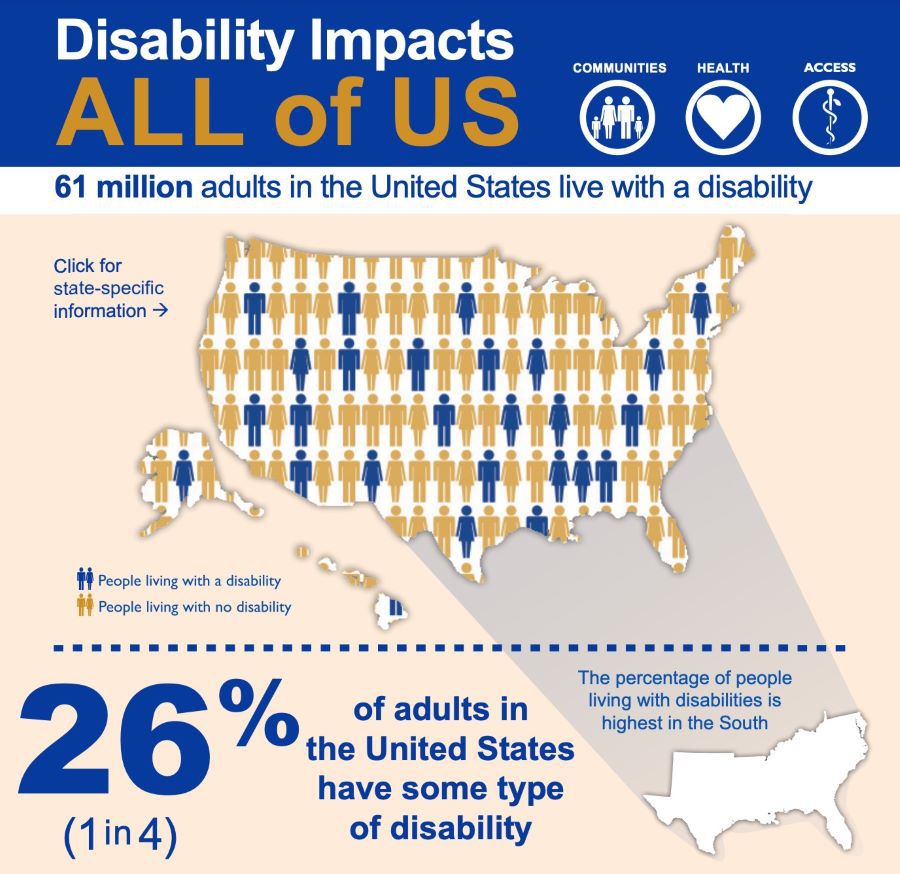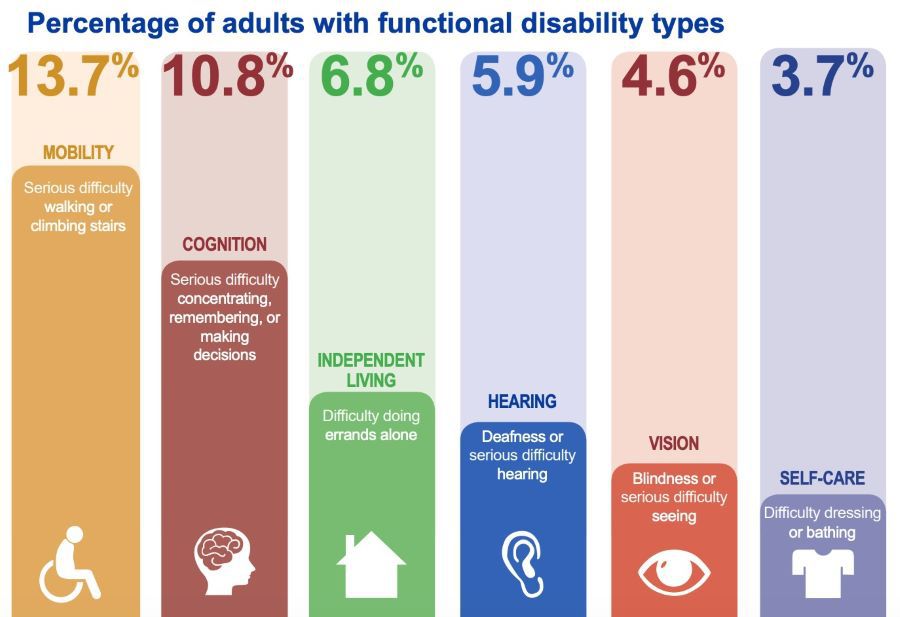Service dogs aren’t what they used to be. You might have the idea that service dogs are just able to be seeing eye dogs or hearing-impaired support dogs, but there’s no limit to what dogs can do for people with disabilities.

Service dogs are specially trained dogs that help a person with a disability. To qualify as a service dog, a dog must perform a specific task that directly helps a person with their disability.
According to the CDC, a disability is any condition of the body or mind that makes it more difficult for the person to complete certain activities, or go about daily life. These can be activity limitations or participation restrictions.
It may surprise you to learn that 26% of the U.S population has some form of disability. That’s one in every four people.

Over the years, the definition of a disability has become more inclusive to cover people with limitations related to vision, mobility, hearing, mental health, social relationships and thinking or cognitive abilities, like remembering, learning, and communicating.

With disabilities becoming more inclusive and understood, the popularity of service dogs has increased. Because many disabilities included are non-visible, lots of people choose to register their service dog with visible identifiers.
Let’s take a look at 11 types of service dog and the tasks they can be trained to support with.
Psychiatric Service Dogs
Psychiatric dogs may sound like emotional support animals, but they are very different. Emotional support animals just provide general comfort and support to their handlers. Psychiatric service dogs perform a specific task that alleviates a symptom of a disability.
1) Detect a change and prevent a symptom
Disabilities like severe depression, anxiety, and Post-Traumatic Stress Disorder (PTSD) can be helped by psychiatric support dogs. A dog can be trained to sense a change in their handler and interrupt a negative symptom such as a panic attack or a flashback.
2) Scan a room for safety
A dog could also be trained to scan a perimeter, or walk the room before their person enters it if that’s related to the disability. Say for example the handler is a veteran and experienced an explosion. In this case they may have trouble entering new spaces for fear of a flashback. The dog can walk the room in advance to show the handler that it is safe.
3) Get the handler to engage in daily activities
If a person has depression, a service dog can force the handler to get out of bed or get out of the house in the event that they are having a depressive episode.
4) Create a barrier
If a person has OCD or is an extreme germaphobe, a dog can create a physical barrier between their handler and other people to help them feel safe.
A dog that performs any of these tasks would go through extensive training and would not be considered a pet, but a highly trained service animal.
5) Interrupt self-harming behavior
People with autism, especially children can have a service dog de-escalate a meltdown by lying on their lap or preventing them from hurting themselves with physical intervention.
Medical Alert Dogs
6) Detect an allergen
These are dogs that are trained to detect an ingredient through smell. If a person has a life-threatening allergy, this is a disability that could prevent them from everyday activities. A dog can be trained to alert and prevent their handler from consuming a life-threatening ingredient.
7) Detect a change in glucose levels
Service dogs can help people with diabetes by detecting a change in blood sugar and reminding them to take insulin.
8) Get help from another person
If a medical condition causes a person to need supervision or assistance because they might have a seizure or another condition, a dog can be trained to get help from another family member, stranger, or even call 911.
9) Support before, during and after a seizure
People with epilepsy benefit from a service dog who may find help or call 911 with a k-9 alert phone. They could help the handler regain consciousness after a seizure by licking their face. They can physically move the person to a safe place if they are having a seizure near a hazard. They may even be able to detect a chance and alert the handler moments before a seizure so the handler can safely lie down and avoid injury.
10) Crowd control
A service dog can be trained to create a safe perimeter between their handler and others in a public space. This could be for a seizure, panic attack, or other disability that could be worsened by crowding.
11) Provide mobility assistance
Service dogs can be trained to retrieve objects, open doors, press automatic door opening buttons, and even turn lights on and off. People with MS, brain injuries, spinal cord injuries, and arthritis benefit from these types of tasks.
For every disability, there are a number of tasks that dogs can be trained to perform that alleviate limitations or the challenges of participating in daily activities. Support coordination specialists can refer plan management participants to agencies that provide service animals.
The important thing to know about registering your dog as a service dog is that you must have a disability that your dog helps with, and the dog must perform a specific task to qualify as a service dog.
No one is allowed to ask about the nature of your disability but they are allowed to ask if your dog is a service dog and what the task the dog is trained to do is.
You do not have to demonstrate the task or provide any certificates, but often businesses want to see them.
Service dogs will often wear a special harness or have a certificate or ID in order to avoid conflicts in public spaces.
Many of these surprising tasks are not obvious like seeing eye dogs. Even hearing impairments may not be an obvious disability to people, so visible identifiers are great to have on hand.
